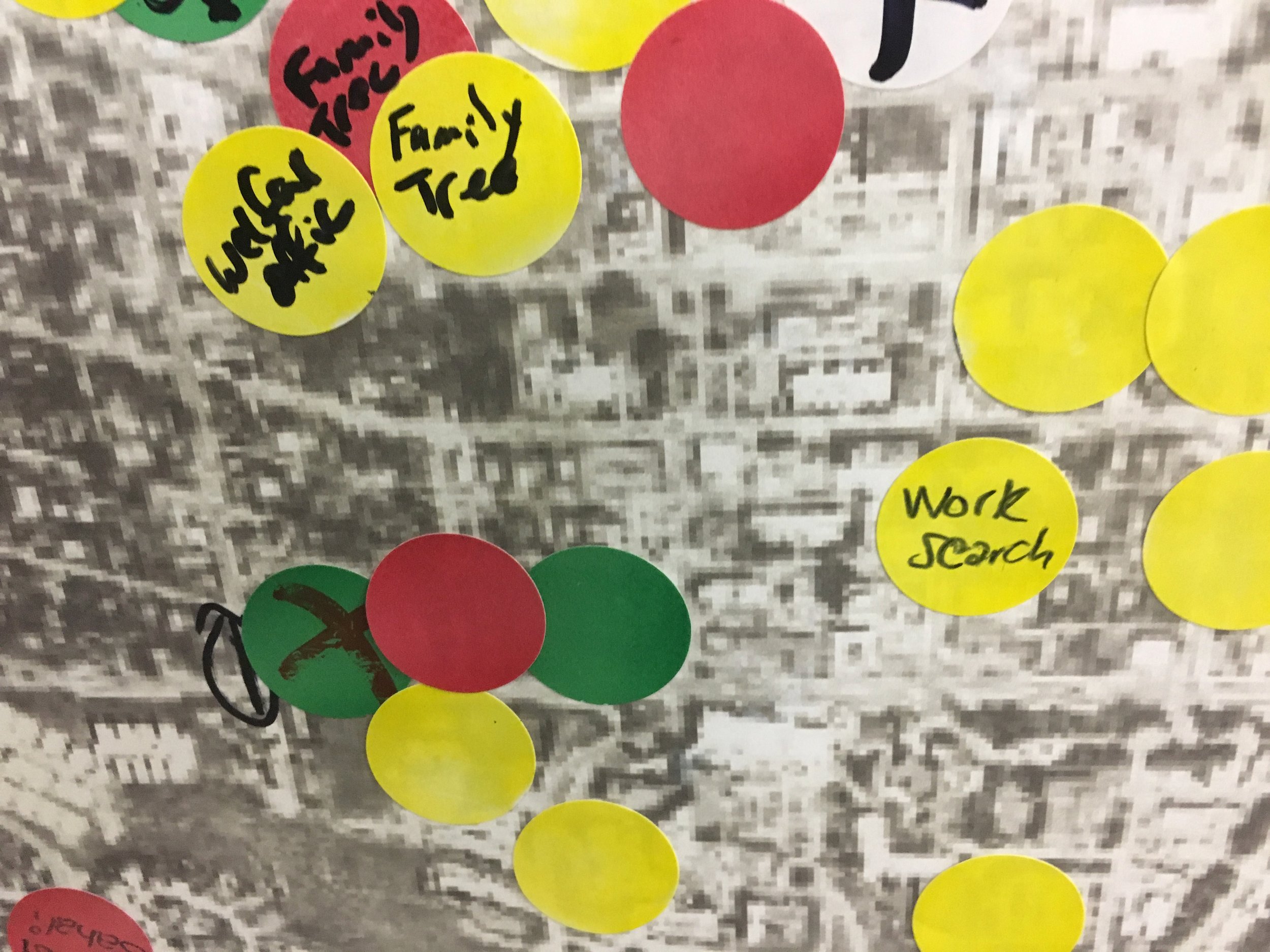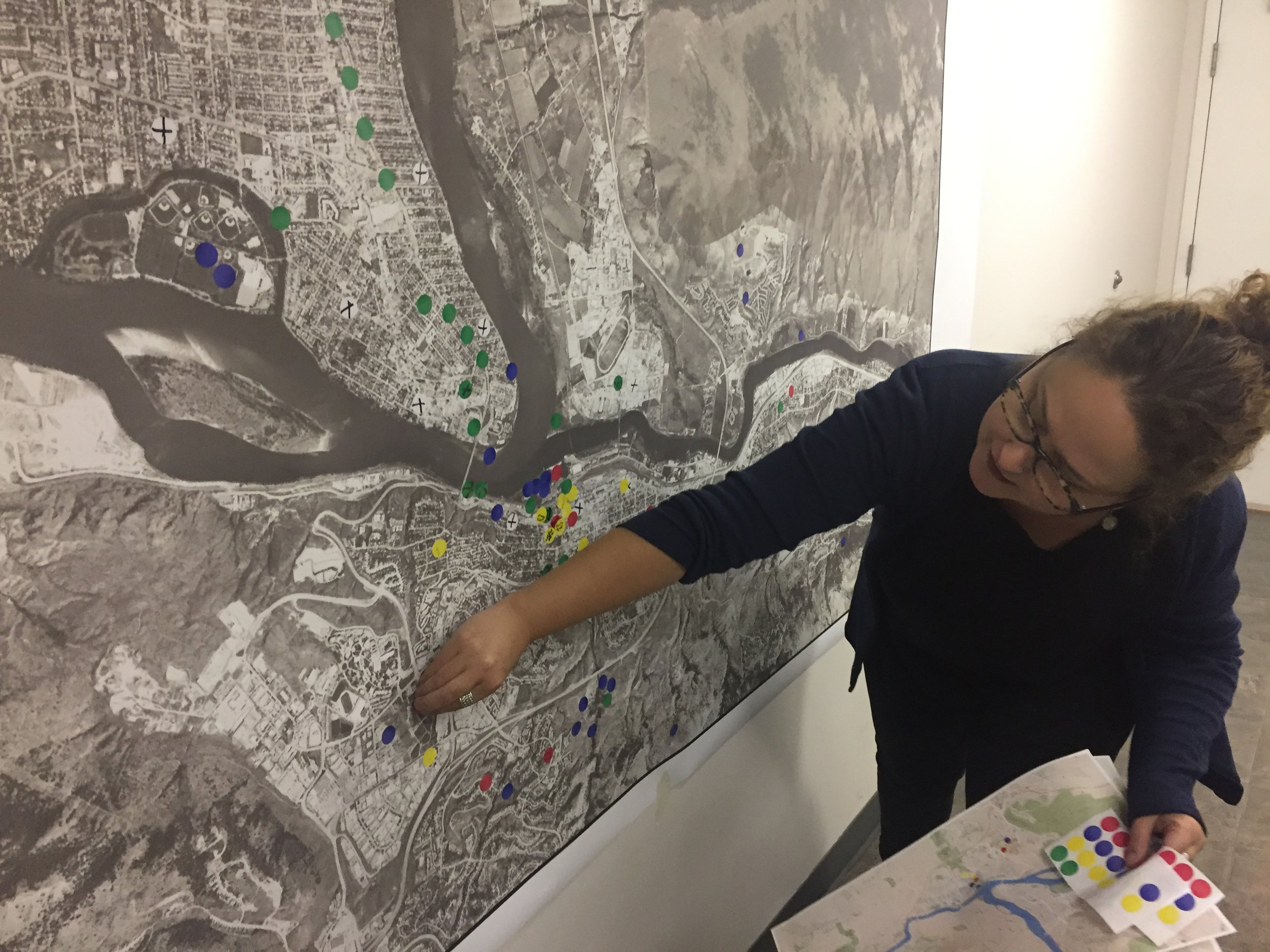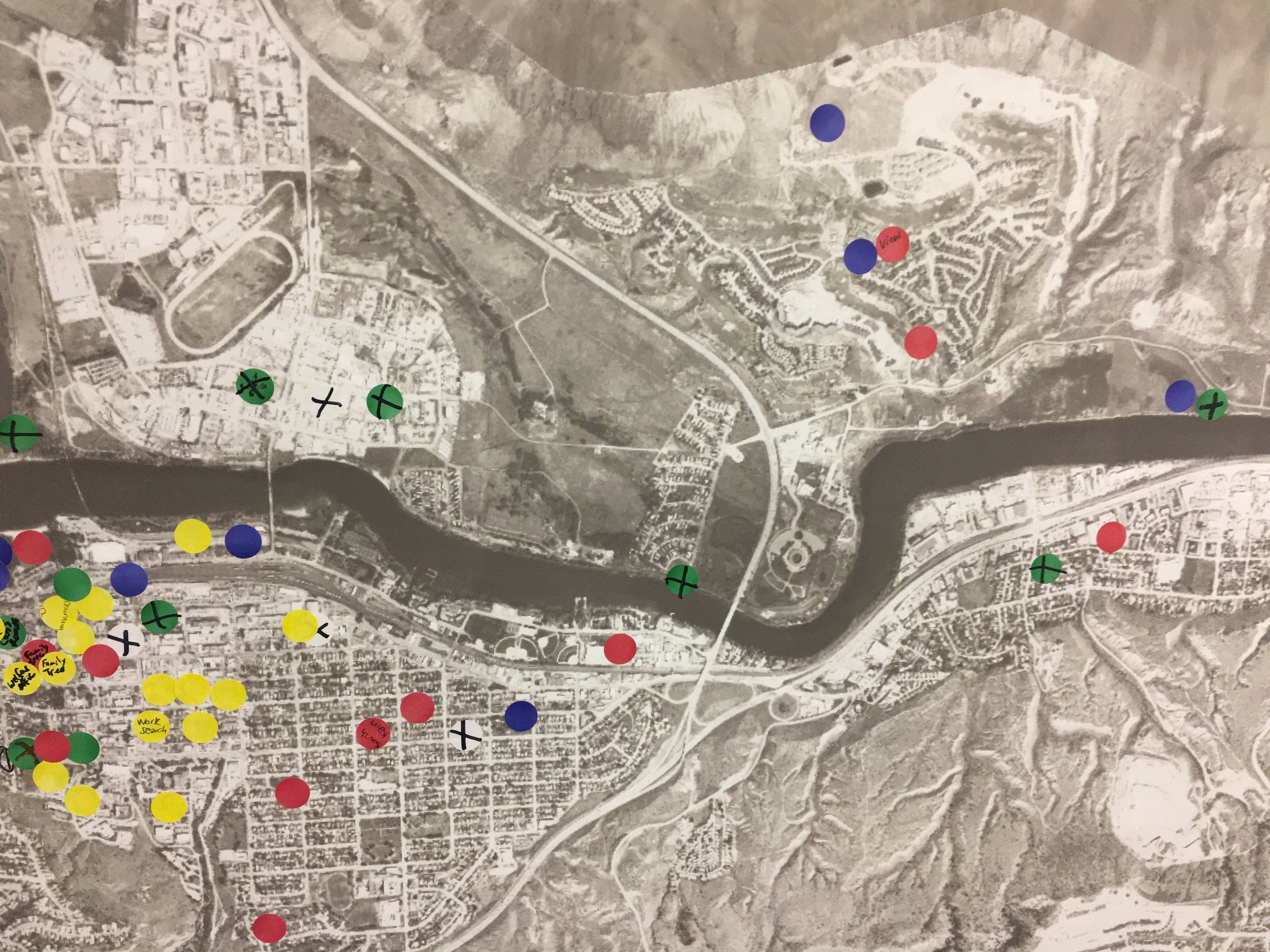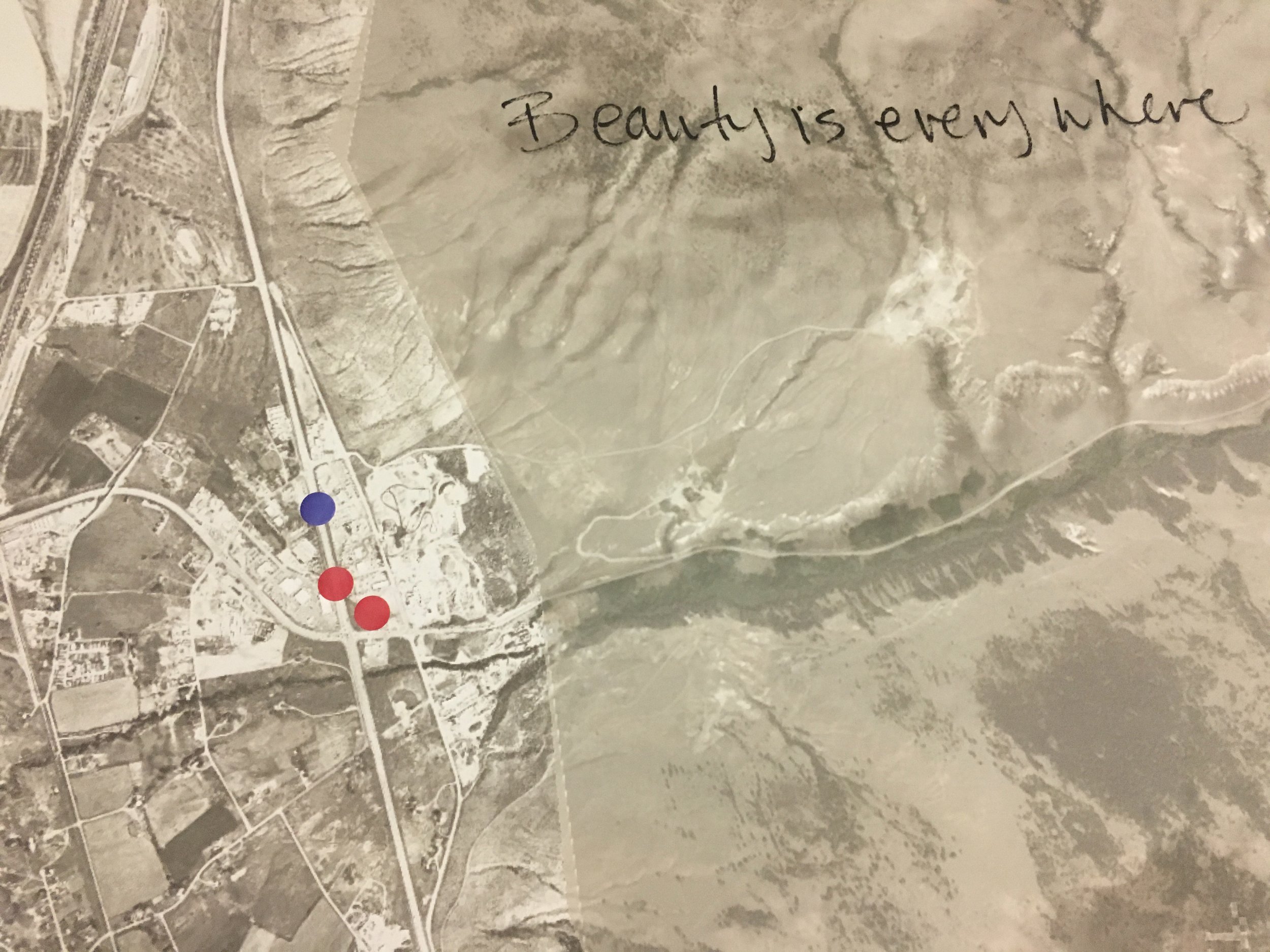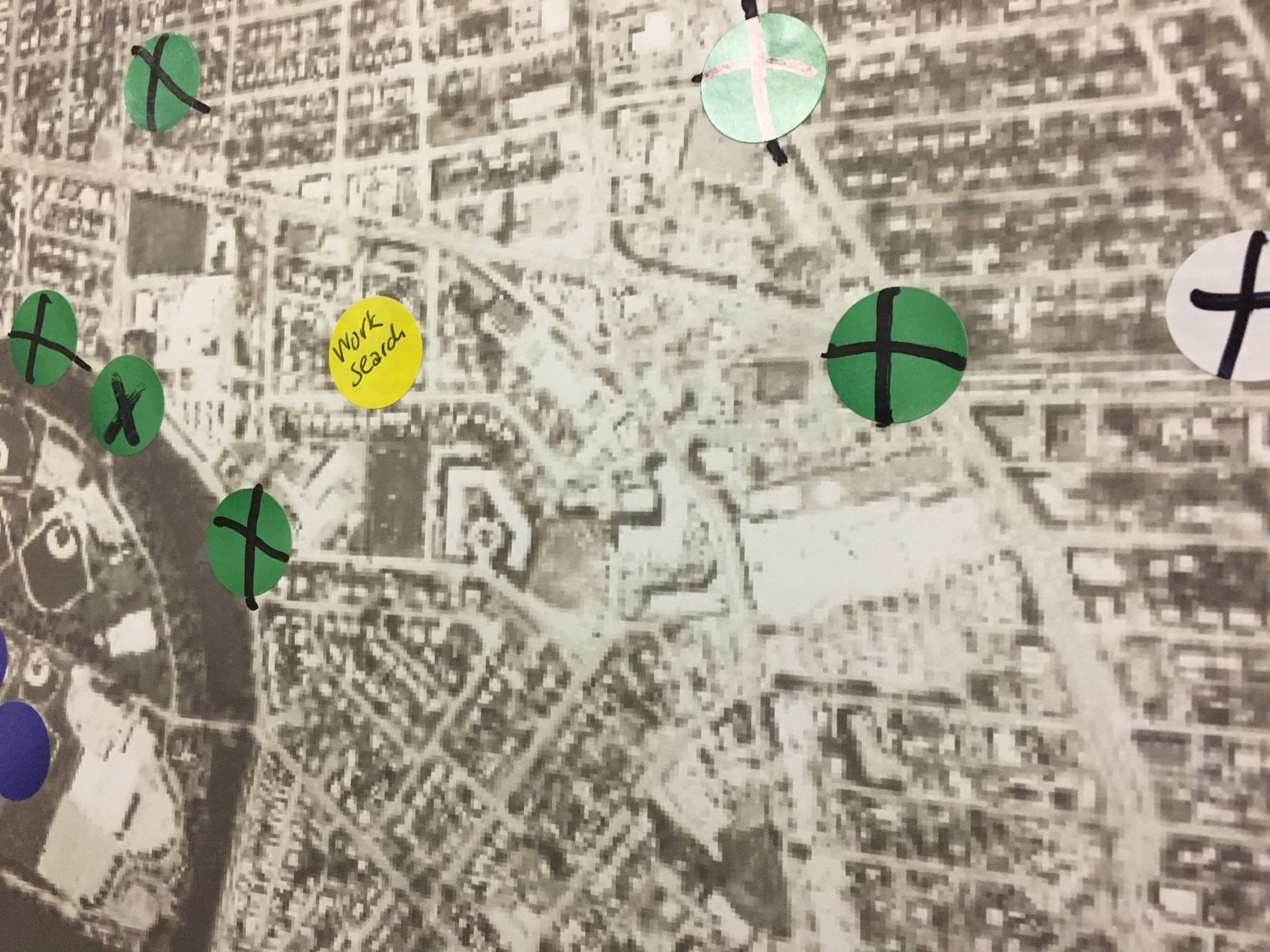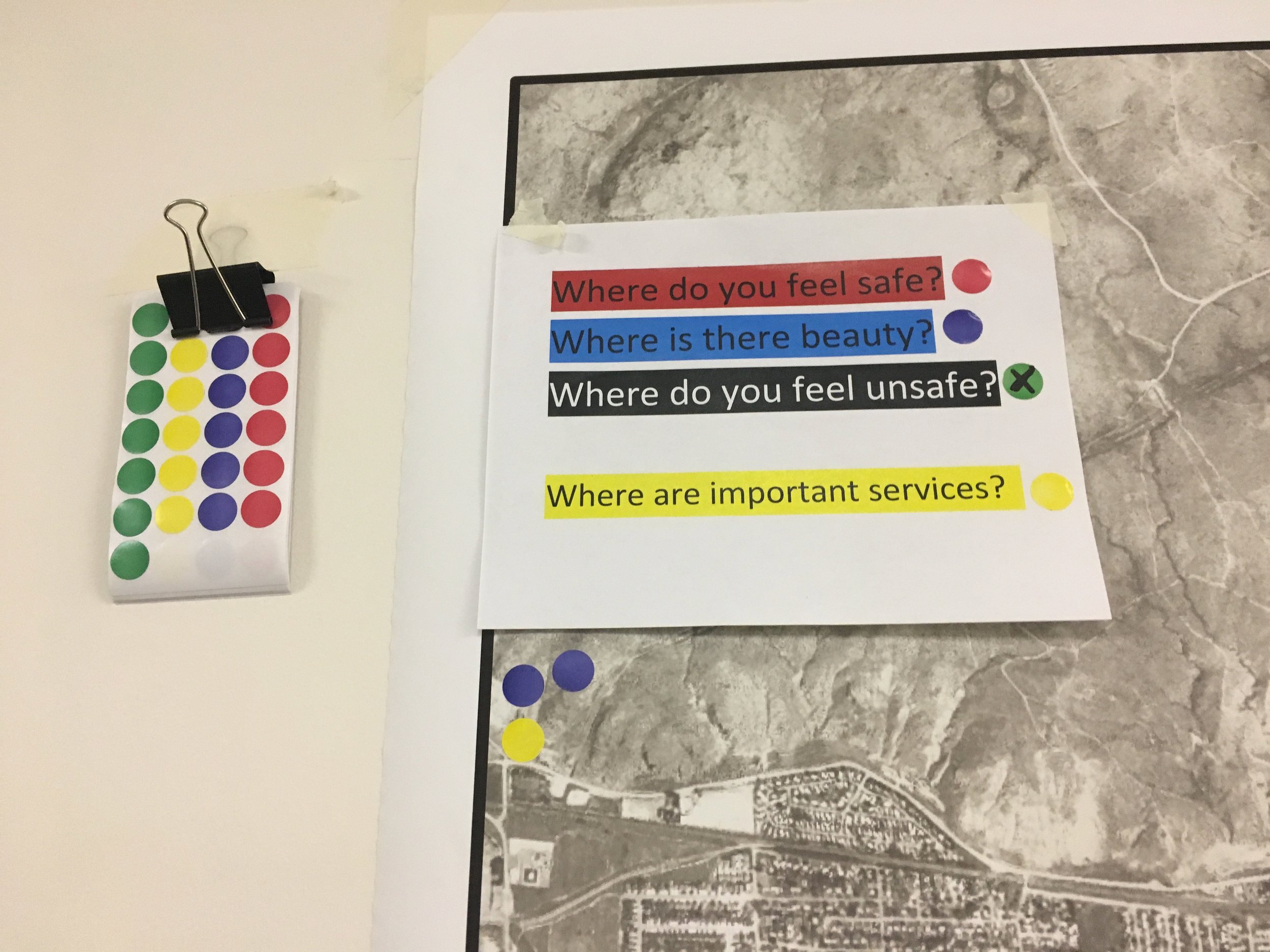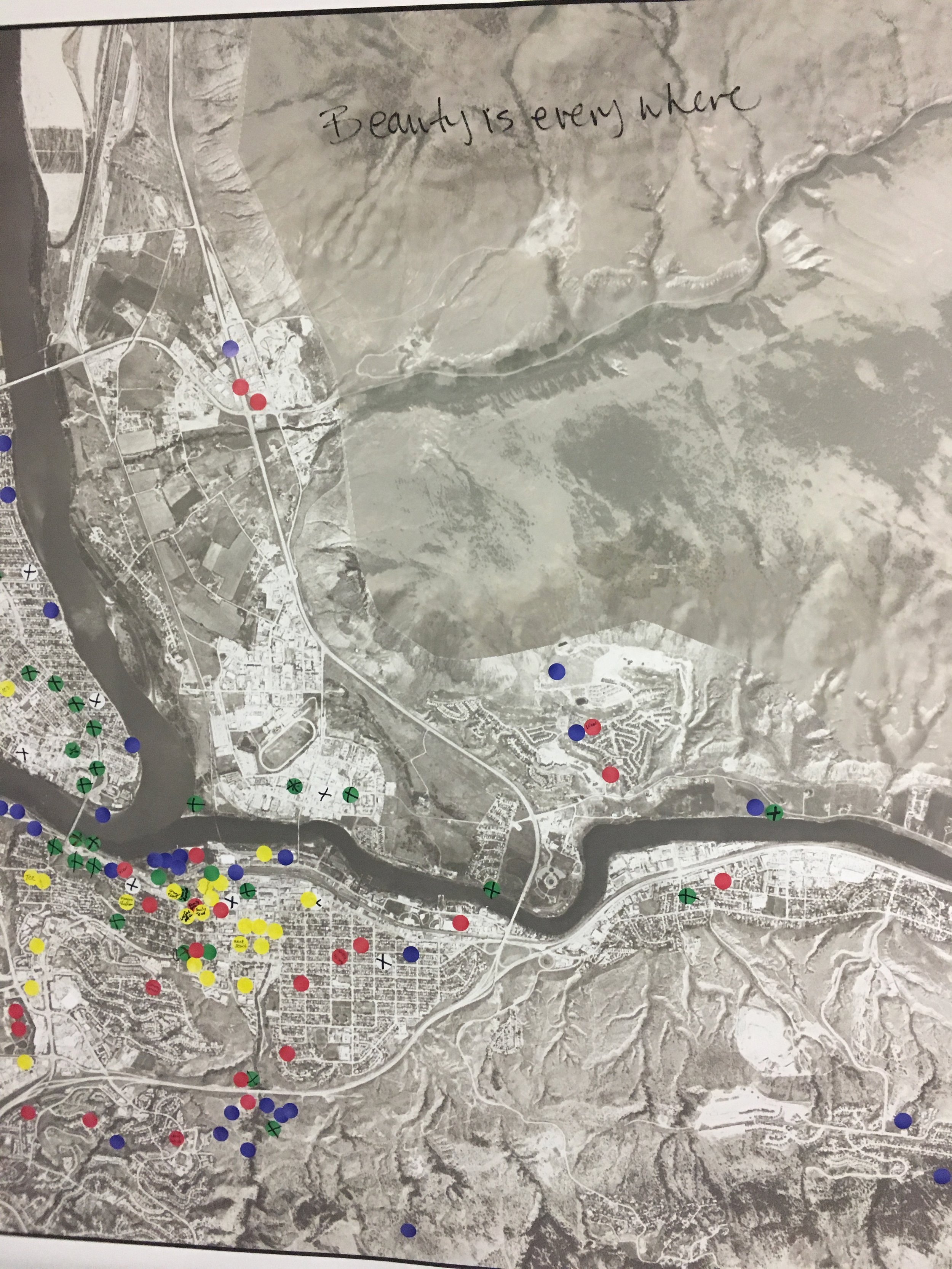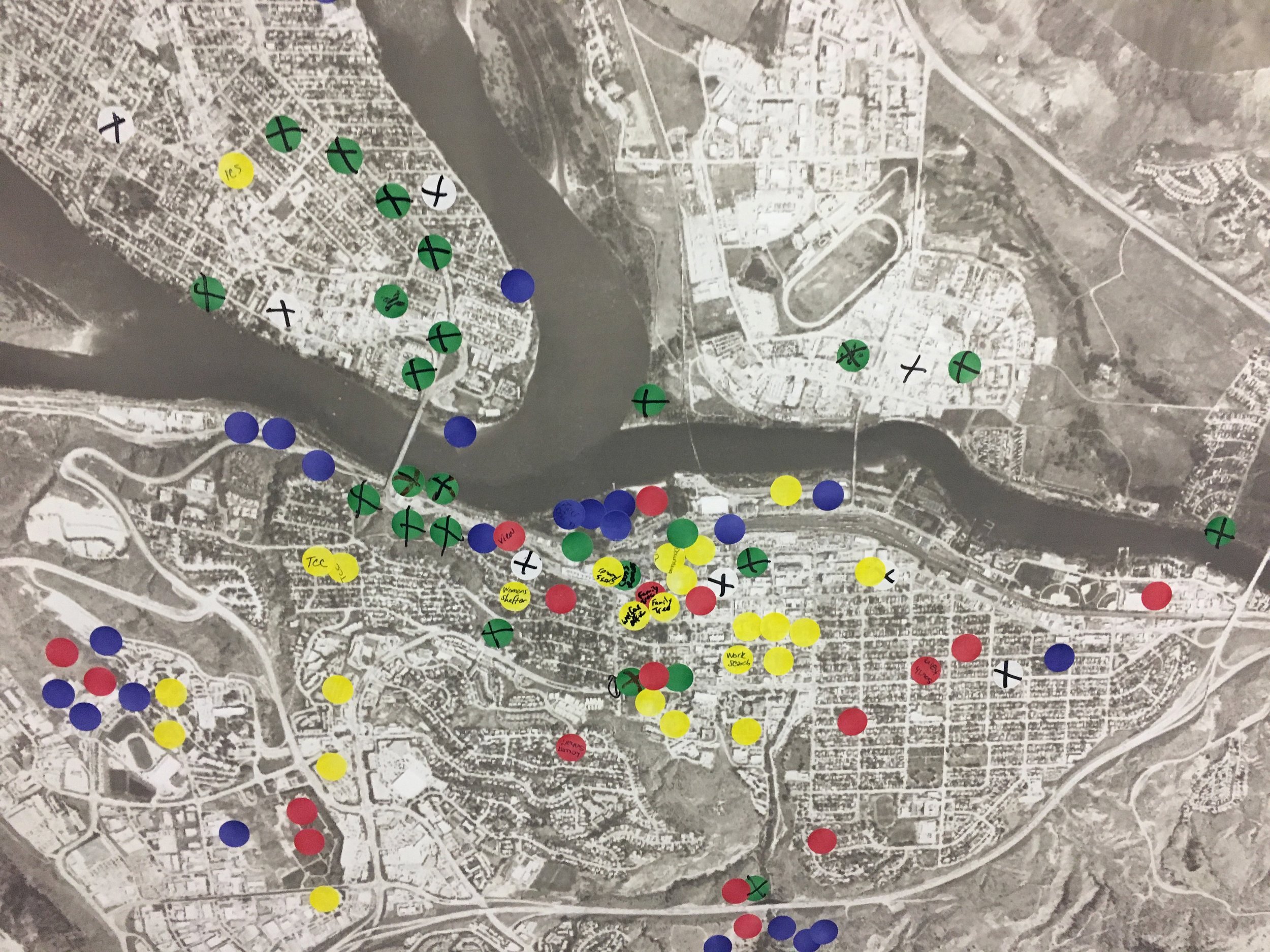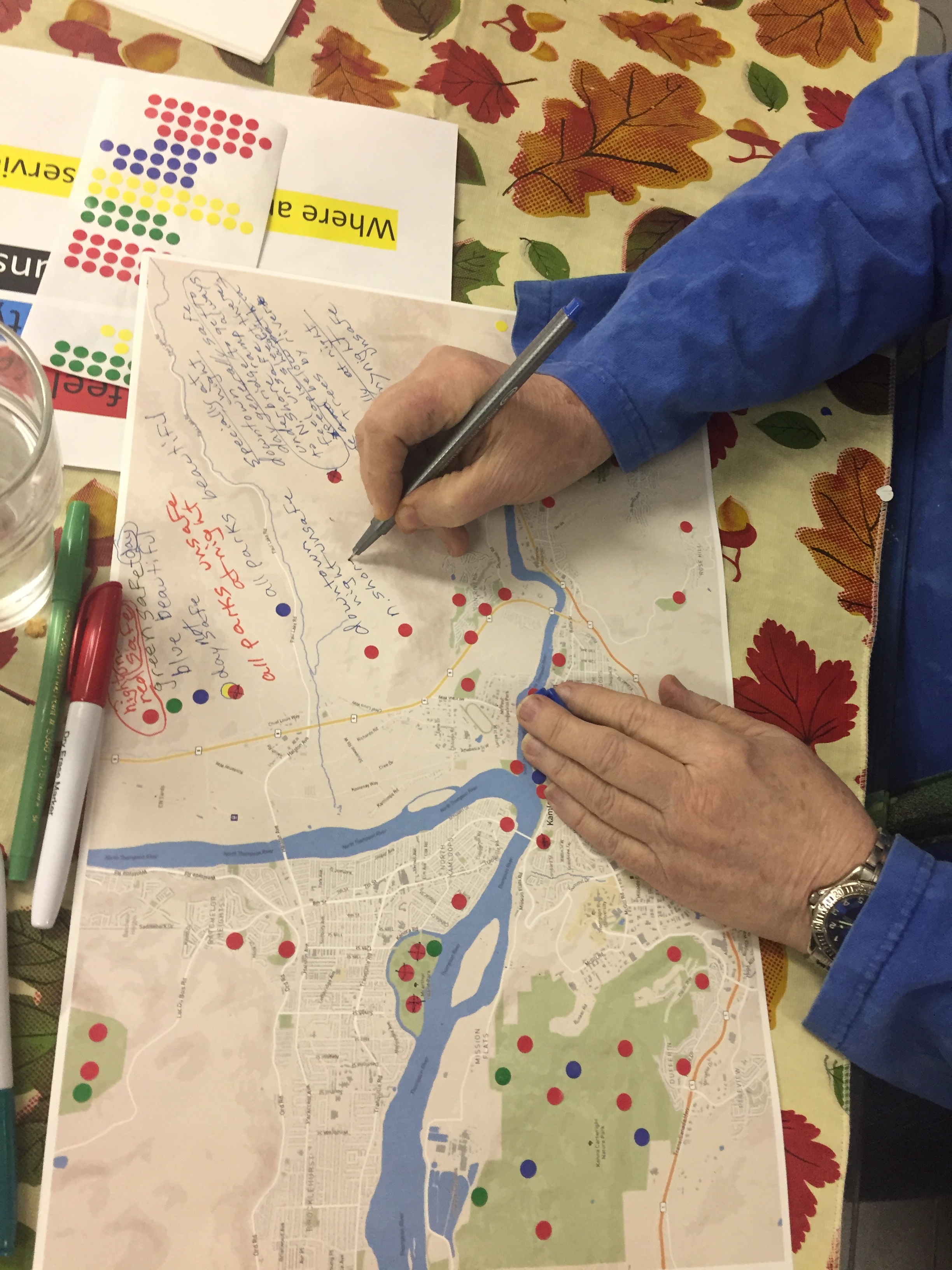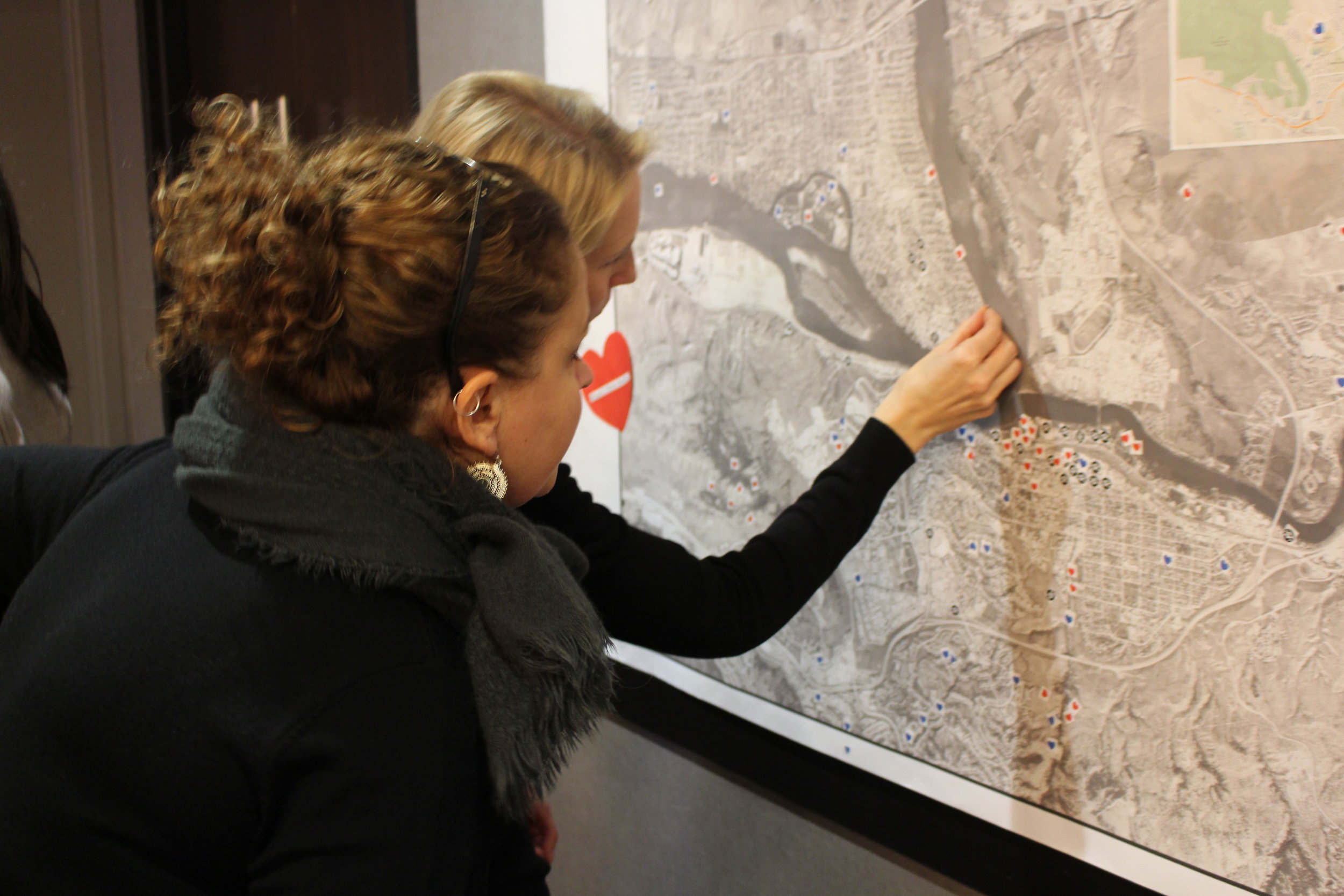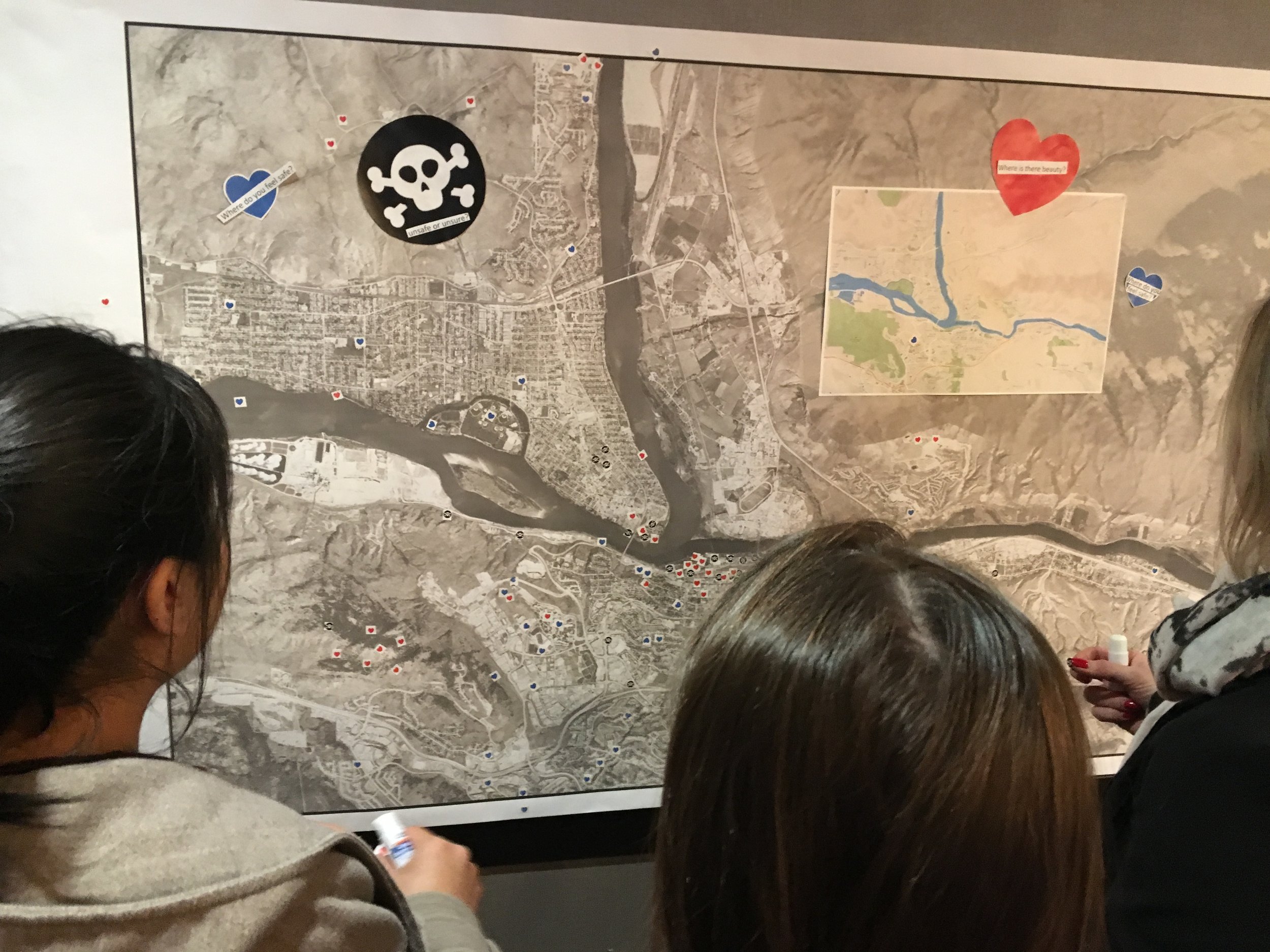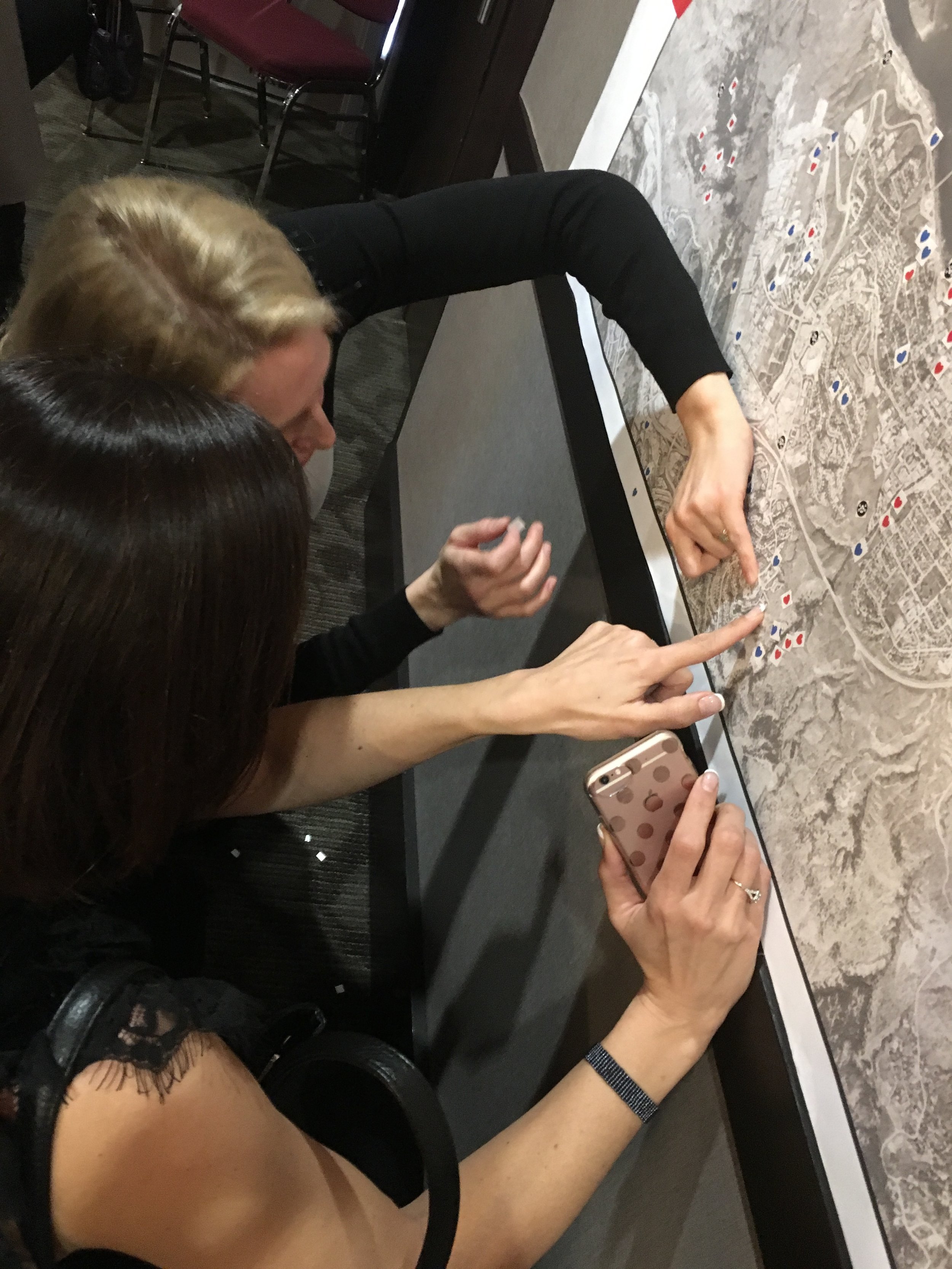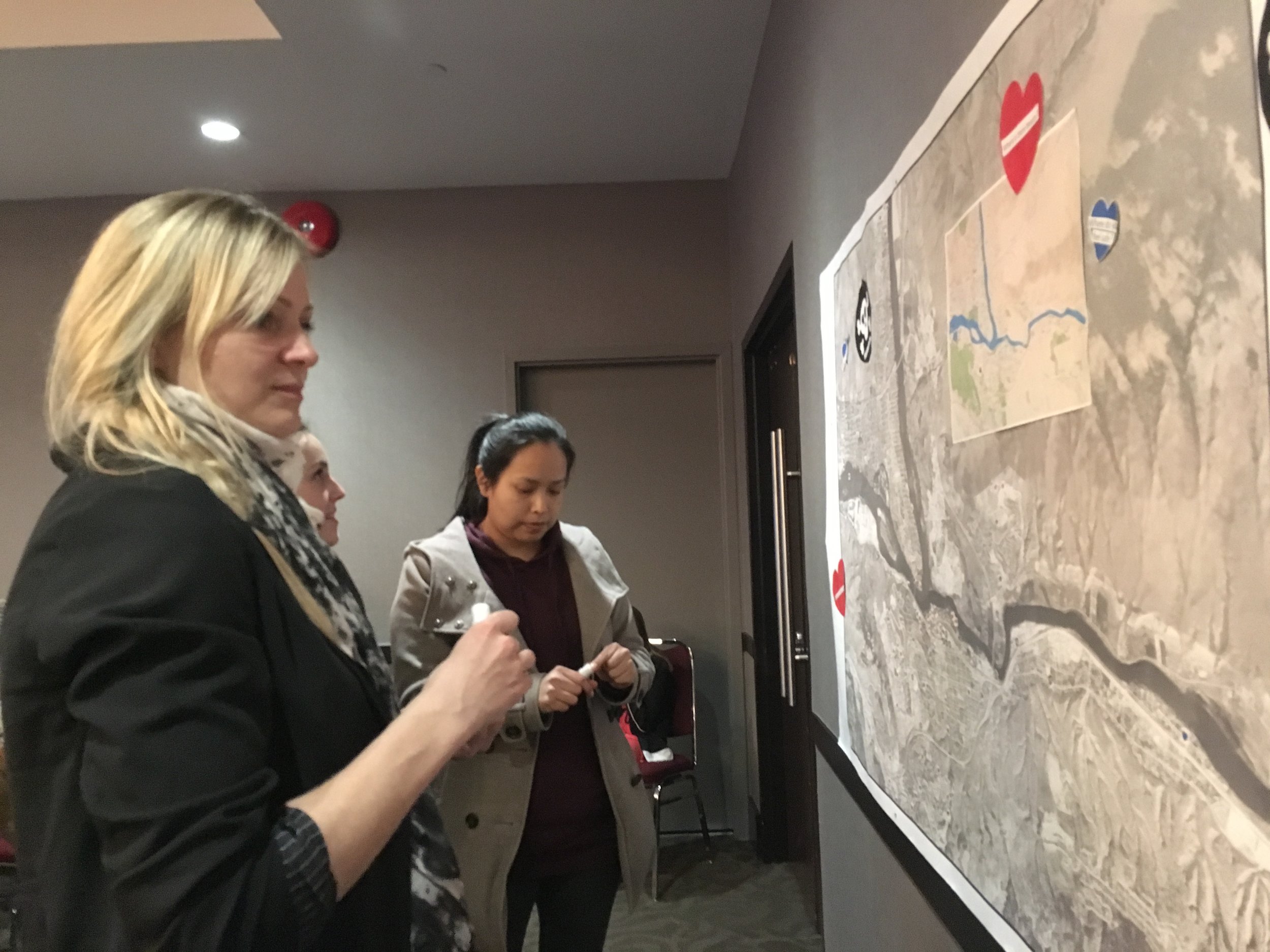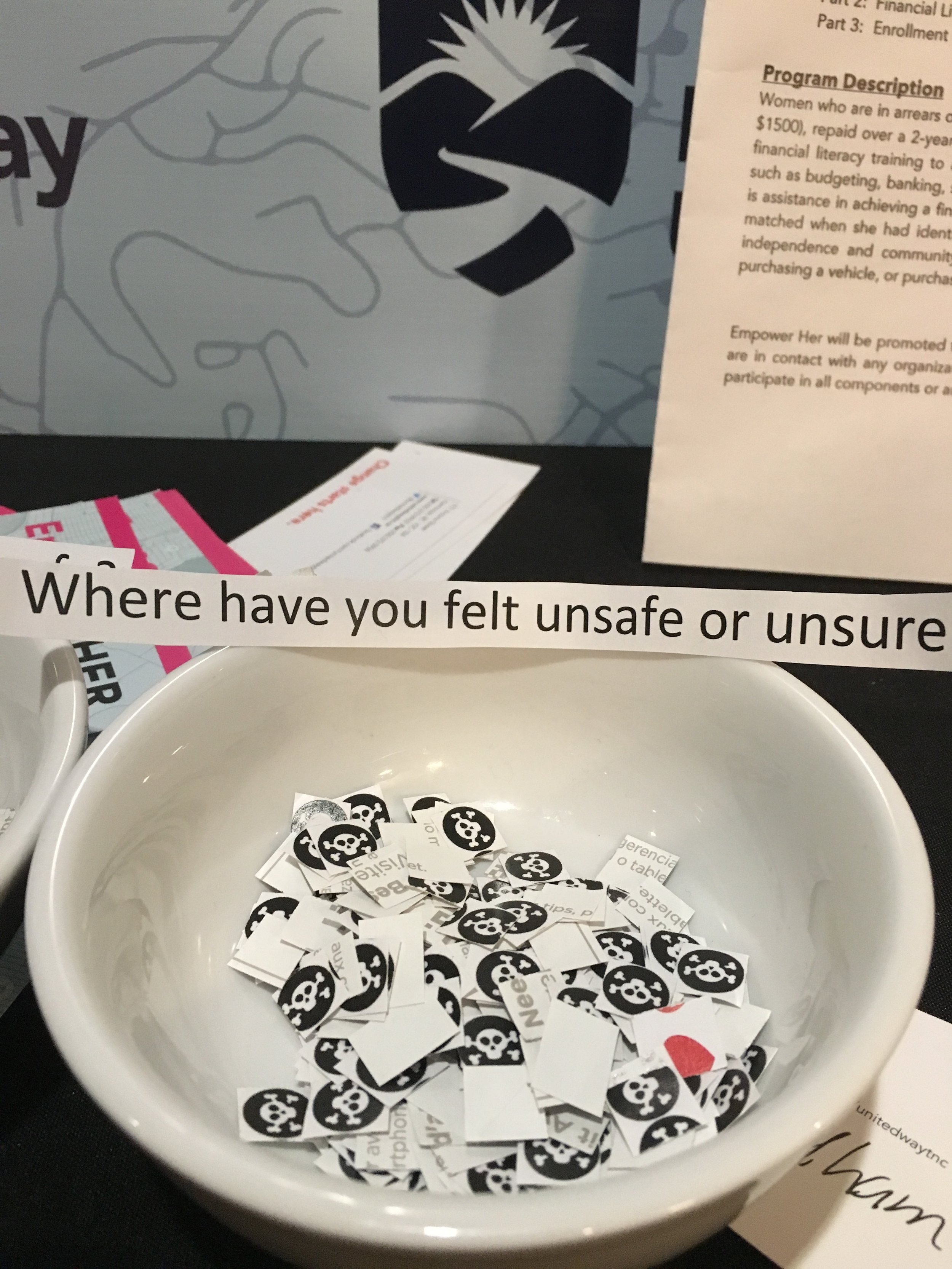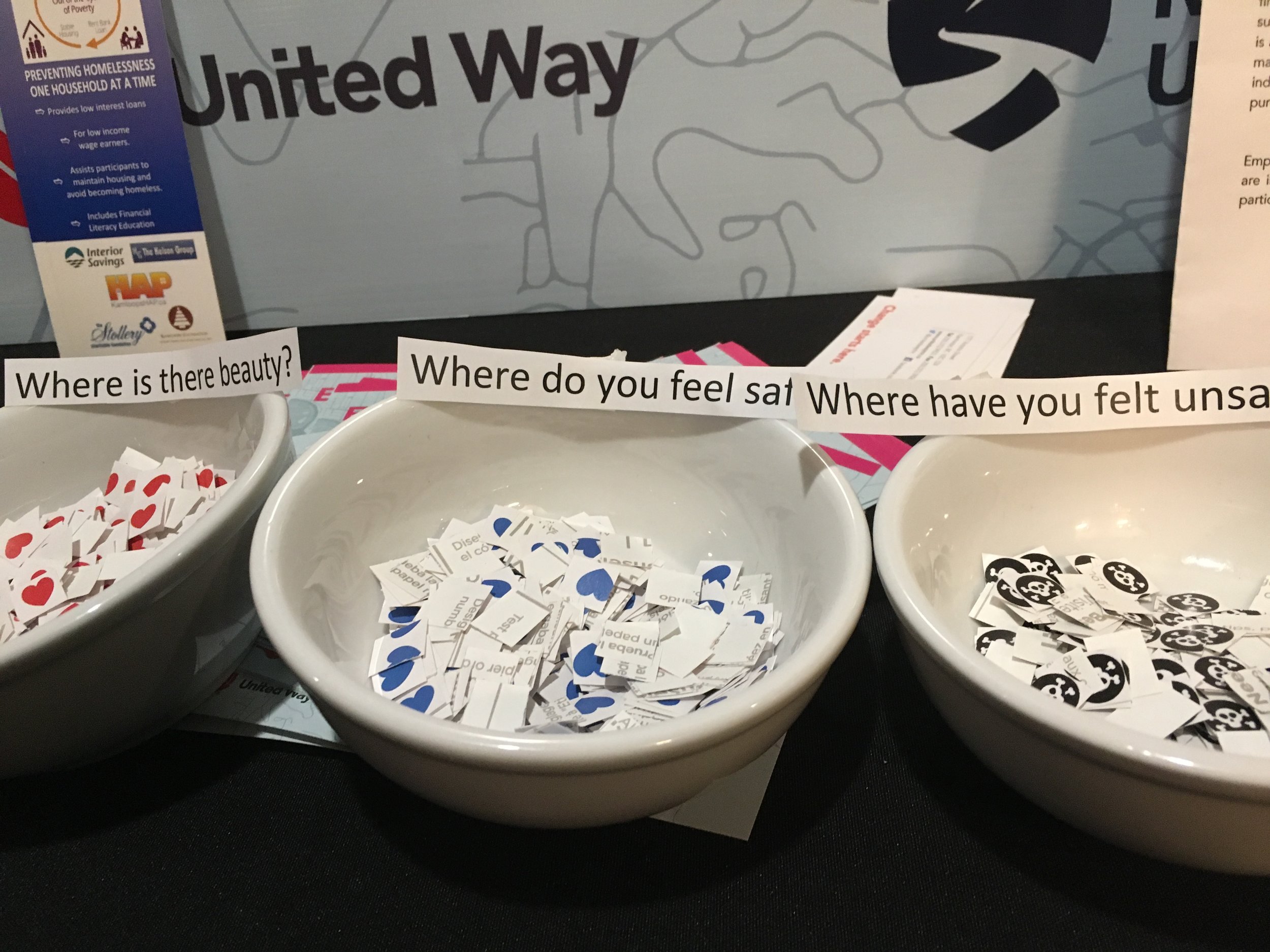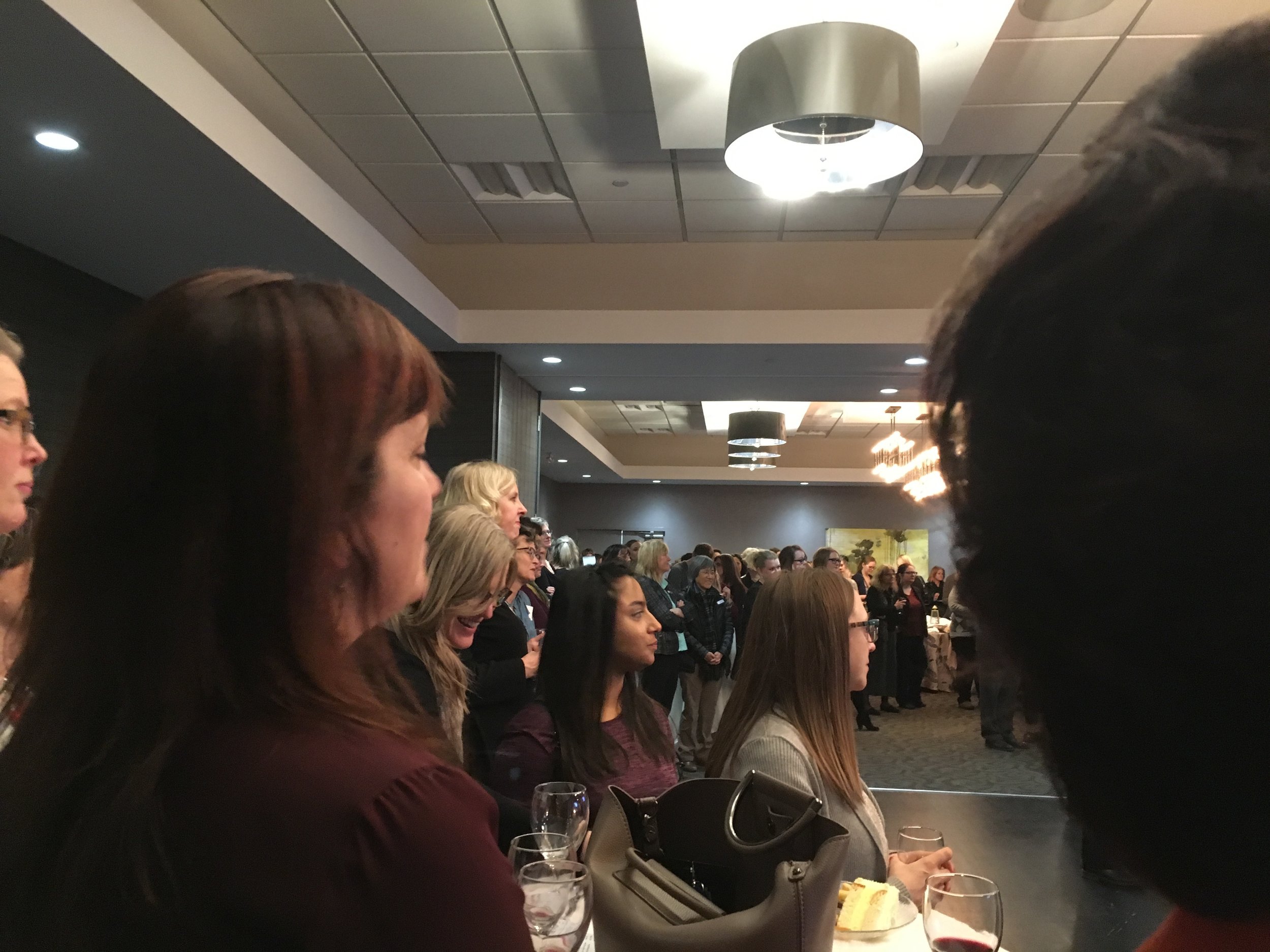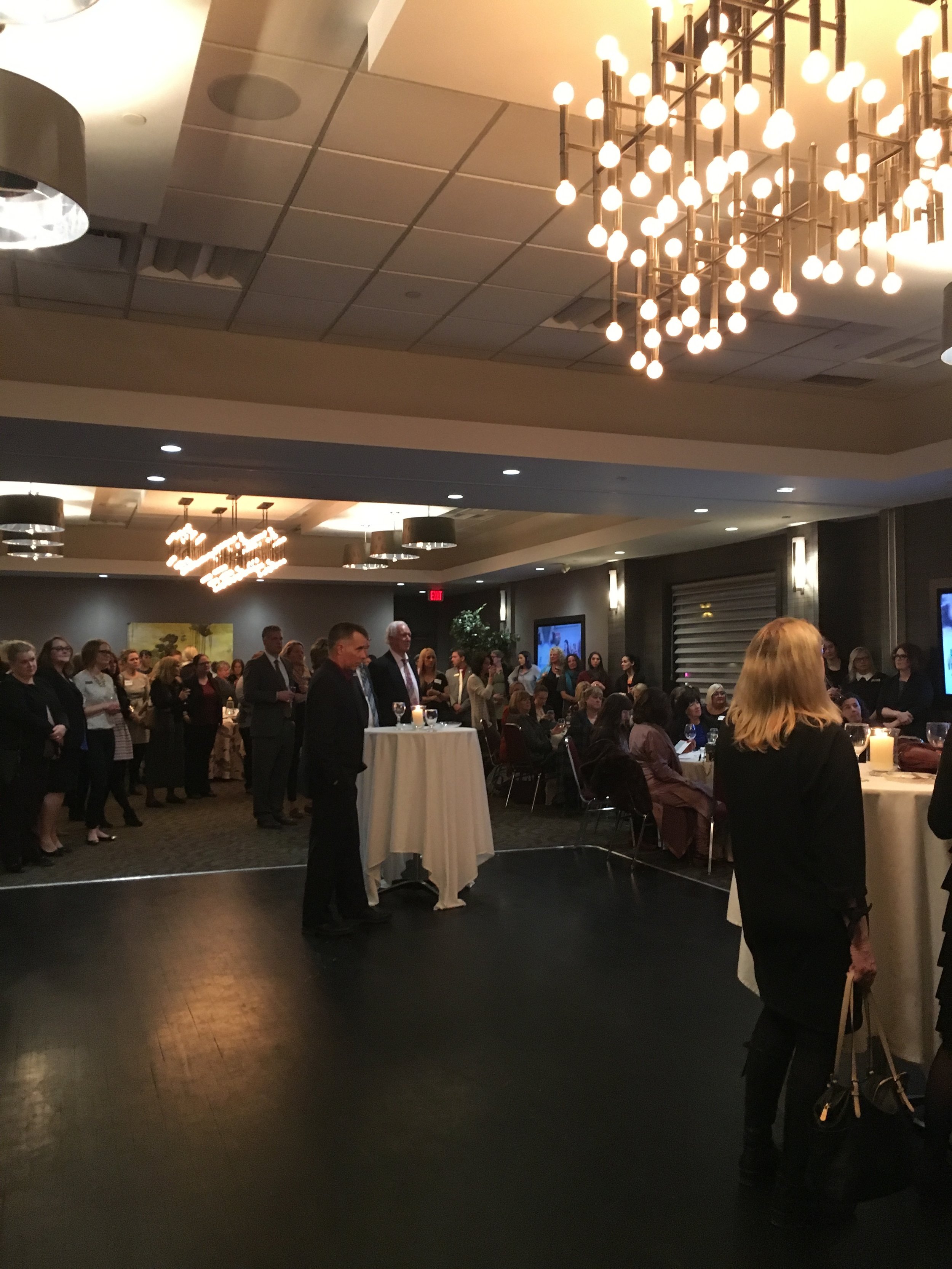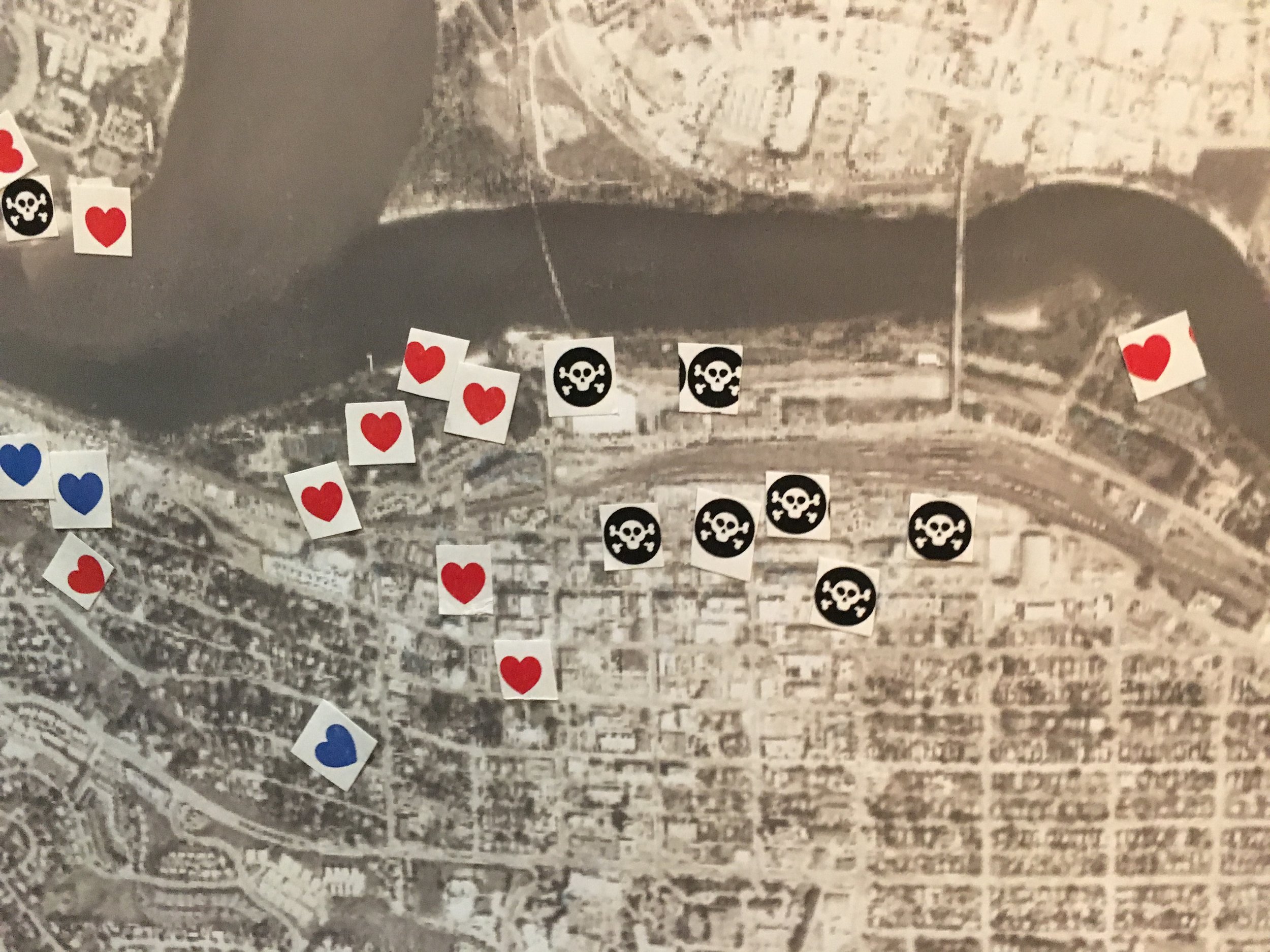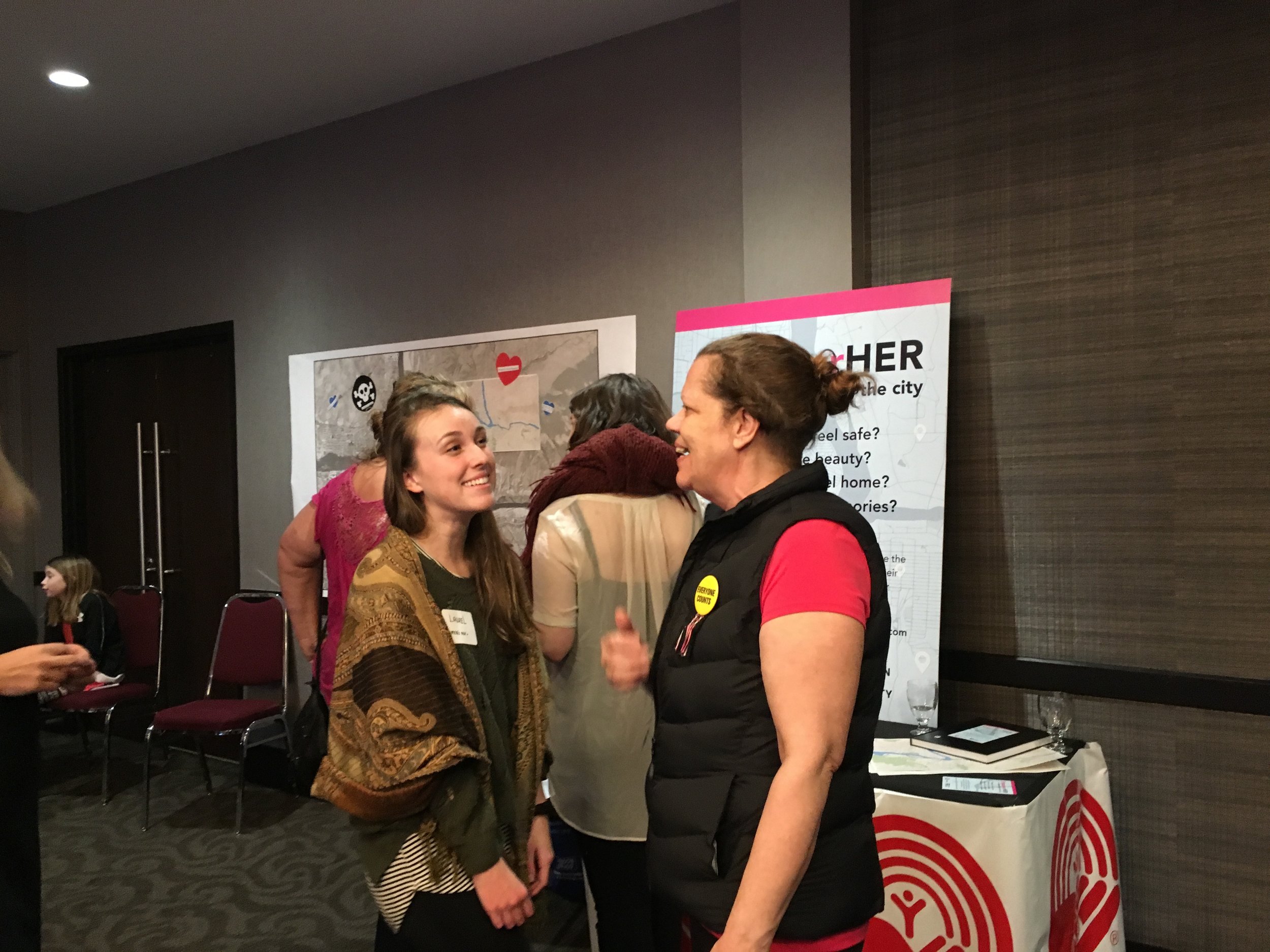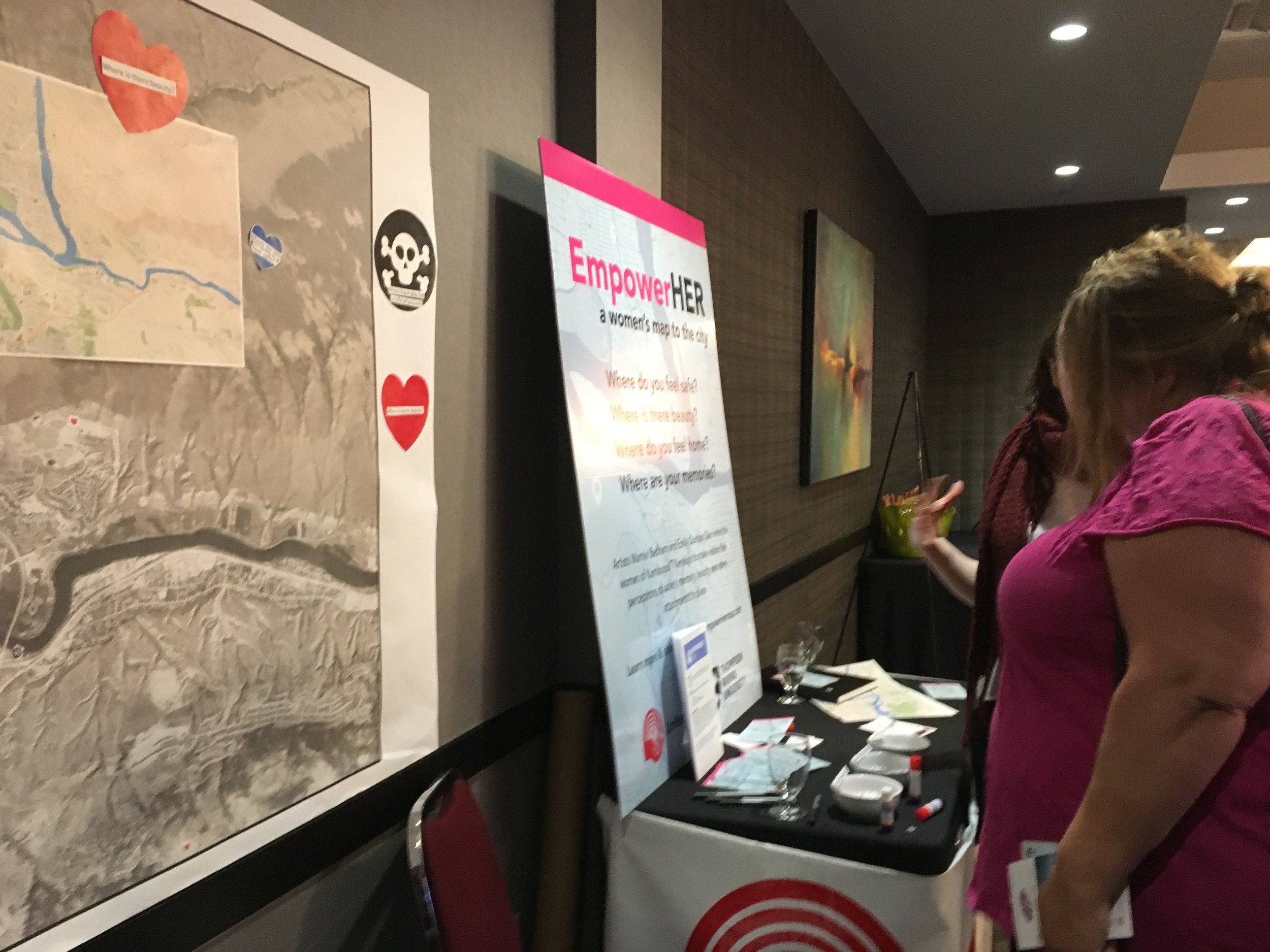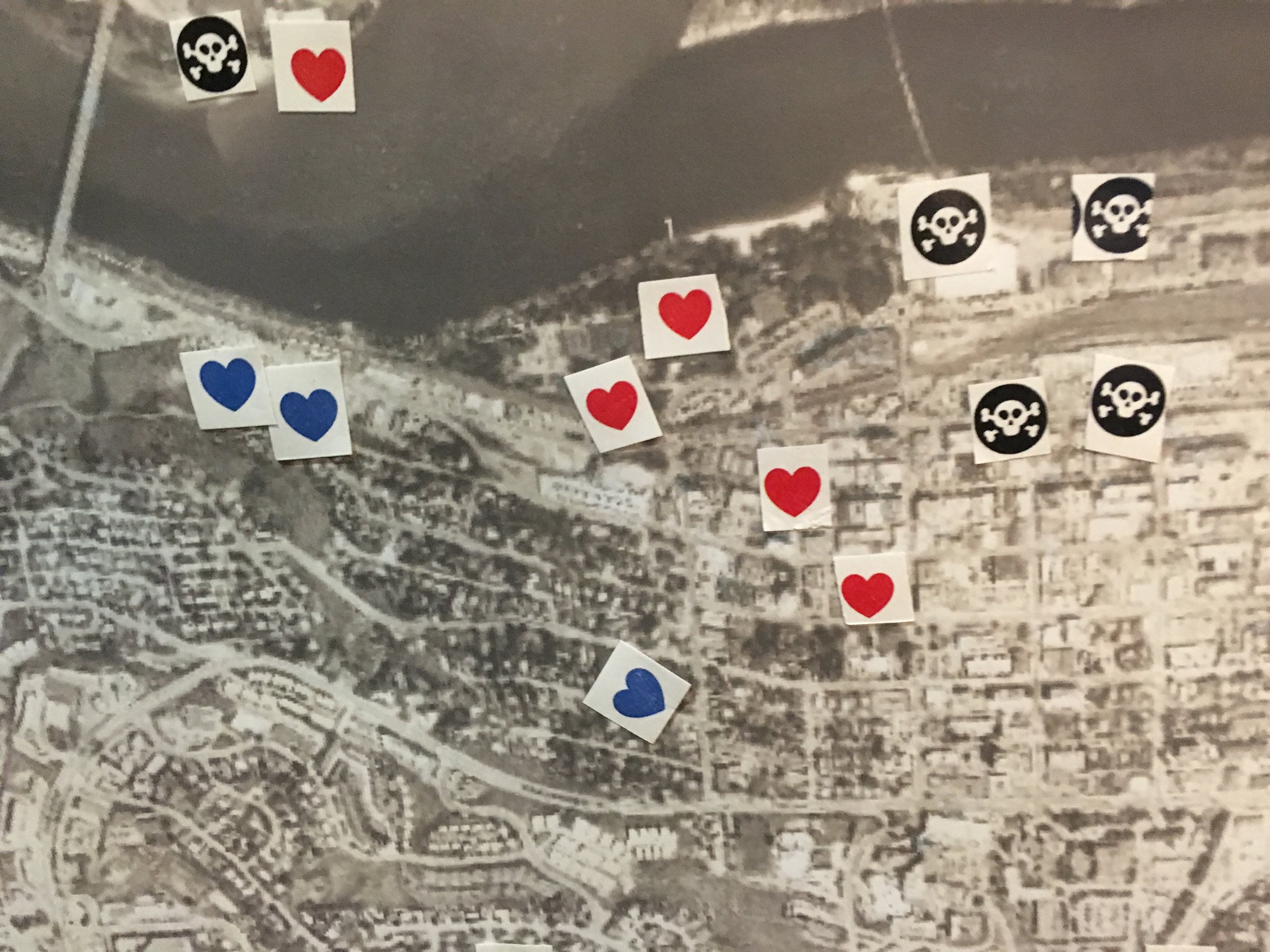Unveiling the Maps: Art Event & BBQ
In the hot, summer months, we were lucky to be able to gather with contributing women, supporters of the project, community members, and new friends at the JUMP Day Shelter. This event served to unveil the new artistic map created by Dr. Marnie Badham and Emily Dundas Oke as a visual response to the 800+ contributions to the EmpowerHER project. Further, it provided space to reflect on the work we’ve done, and envision ways in which it can empower our community.
Generously hosted by Glenn Hilke and Cynthia Tavers of JUMP Day Shelter, who graciously offered the space as a refuge from the smoky outdoors, it became a symbolic return of the project to its roots: EmpowerHER hosted its first participatory art and mapping workshop at JUMP in March 2018, and now it returns as another avenue for building social connection and promoting important services in our community. Over 200+ joined us for lunch, generously provided by the amazing team of the United Steelworkers Local 7619.
The participation continued: prompted with a simple question, “Where do you see change?”, the event continued to spark divergent and directed dialogue. Once again, visibility quickly became a common theme: literal visibility on the north shore with a call for increased street lighting, visibility for those experiencing homelessness, and visibility for the stories of our elders. With 2018 being a municipal election year, it was refreshing to see local candidates, entrepreneurs, volunteers, and people of diverse backgrounds come discuss aspects of the project and how they can be employed to address a range of issues. From food security to making male-dominated spaces more comfortable for women, it was encouraging to see that this unveiling event also marked further uses for the research. As the project emphasized process, it is suiting to have this informal dissemination: one that was about sharing, but quickly continued to incorporate conversation building and envisioning. It carried the same tone as the workshops did: prominent issues specific to Kamloops that are not often given a platform, nor a comfortable space to talk about them, being openly shared among researchers, women, and many people hoping to affect change.
Given an opportunity to reflect on the project as a whole, a few key points stand out. Although this project did not gather data in the traditional sense, one thing is for sure: the need for women only services. Complicated emotions arose out of identifying areas that deliver important services, such as shelters or subsidized housing, but many of these places were also identified as places where many women don’t feel safe. Being able to approach these women when they felt comfortable about sharing their experiences is only but a small amount of the work to be done. Therefore, we are grateful for the support that United Way Thompson Nicola Cariboo provided towards this project, and for their receptive response to our summary of the project. This advocacy is but a small part of the immense work they do towards changing lives in our community.
Secondly, the organic form of the project enabled collaboration and responsiveness as needed. With the immense support of the TRU Office of Research and Graduate Studies and their dedication towards supporting community engaged research, and the mentorship of arts + research star Dr. Marnie Badham, the project grew to incorporate such powerhouses as Cynthia Travers, advocate for the homefree, and maps creating narrative forms that women felt most appropriate for communicating their stories.
Thirdly, the format of the project enabled the dialogue that contained these heartfelt stories. Art became a vehicle with distinct advantages from open houses or forums: we met people during their everyday, were able to provide a meal and host get-togethers with families, single women, and friends. Through art, both tangible and intangible connections become visible.
And lastly, that this work can’t be done without the immense support of those who value change in our communities: the United Way Thompson Nicola Cariboo, The TRU Office of Research and Graduate Studies, the Thompson Rivers University Students Union, United Steelworkers Local 7619, JUMP Community Centre, and of course, the hundreds of women, children, and friends who made this all possible.











